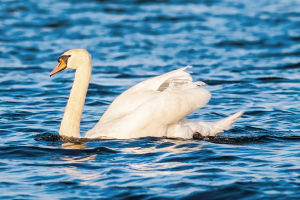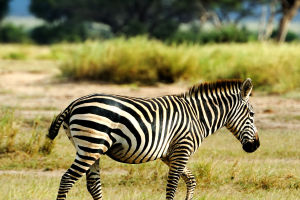Canada is an incredibly vast country, boasting an array of breathtaking landscapes such as the majestic Rocky Mountains, expansive prairies, Arctic tundra, lush forests, winding rivers, and magnificent national parks.
This diverse terrain provides a haven for thousands of unique wildlife species, making Canada the only country in the world where the number of wildlife species reaches well into the thousands.
Stretching across the second-largest land area globally, Canada is blessed with pristine natural beauty and an extraordinary range of animals, both rare and common, majestic and playful.
From land-dwelling creatures like the elusive wolves, formidable brown bears, magnificent polar bears, and graceful North American caribou to the captivating marine life including narwhals, charismatic sea lions, and the resilient salmon, Canada offers an unparalleled opportunity to witness wildlife in their natural habitats.
Among the most endearing avian species is the hornbill puffin, which happens to be Newfoundland's provincial bird. These delightful birds bear a striking resemblance to miniature penguins, albeit with a twist - during the breeding season, their beaks transform into a vibrant shade of orange.
Elliston, with its awe-inspiring green cliffs, stands as the ultimate destination in North America to witness the comical hornbill puffins scuttling across these cliffs and boldly leaping 200 feet into the depths of the sparkling sea below.
One cannot discuss Canadian wildlife without mentioning the beaver, an iconic species and the largest rodent in North America. With its distinctive flattened tail and robust jaws equipped with sharp incisors, the beaver is perfectly adapted for gnawing on twigs and dead wood.
Renowned for their extraordinary industriousness, beavers are so prodigious in their activities that Canadians often use the phrase "busy as a beaver" to describe someone exceptionally hardworking. Beyond their reputation as nature's engineers, beavers play a vital role in maintaining the health of freshwater ecosystems, serving as key contributors to their delicate balance.
Spring emerges as an opportune season to observe the wonders of Canadian wildlife, particularly witnessing the emergence of furry cubs from their cozy dens. Knight Inlet Lodge, an enchanting floating sanctuary on a tranquil lake, serves as a gathering spot for grizzly bears.
Guided by experienced experts, visitors can venture along the bear trails and, with a touch of luck, encounter dozens of these awe-inspiring creatures within a single day.
Springtime also grants an exclusive chance to encounter the enigmatic white Kermode spirit bear, affectionately known as the "ghost bear." Nestled within the pristine rainforests of Great Bear Lodge, this destination stands as a perfect sanctuary to marvel at this rare and elusive subspecies.
Canada's unique position in the world is exemplified by its responsibility toward the polar bear population. It is estimated that at least two-thirds of the world's polar bears call Canadian soil their home.
Scientifically named "Ursus maritimus," meaning "sea bear," polar bears primarily reside in the Arctic Ocean, relying on ice floes as both hunting platforms and habitats. However, the alarming effects of global warming have caused a rapid decline in Arctic ice floes, endangering the polar bears' very survival.
As the ice melts, these magnificent creatures are compelled to spend more time on land, leading to increased conflicts between polar bears and Arctic residents.
Canada's vast and varied landscapes provide an ideal habitat for an astounding array of wildlife. From the towering Rocky Mountains to the Arctic tundra, Canada's ecosystems support countless species, offering visitors and locals alike a chance to appreciate the wonders of nature.
By valuing and conserving this precious biodiversity, Canadians endeavor to ensure that future generations can continue to marvel at the beauty and diversity of their country's wildlife.


